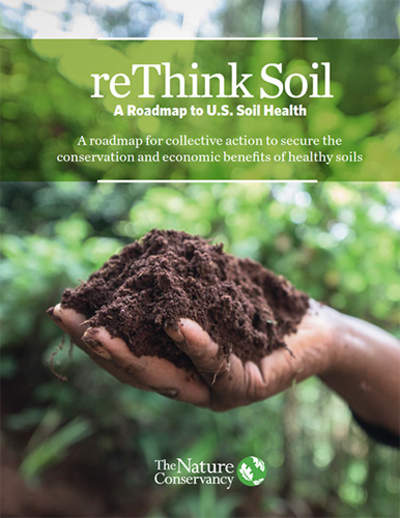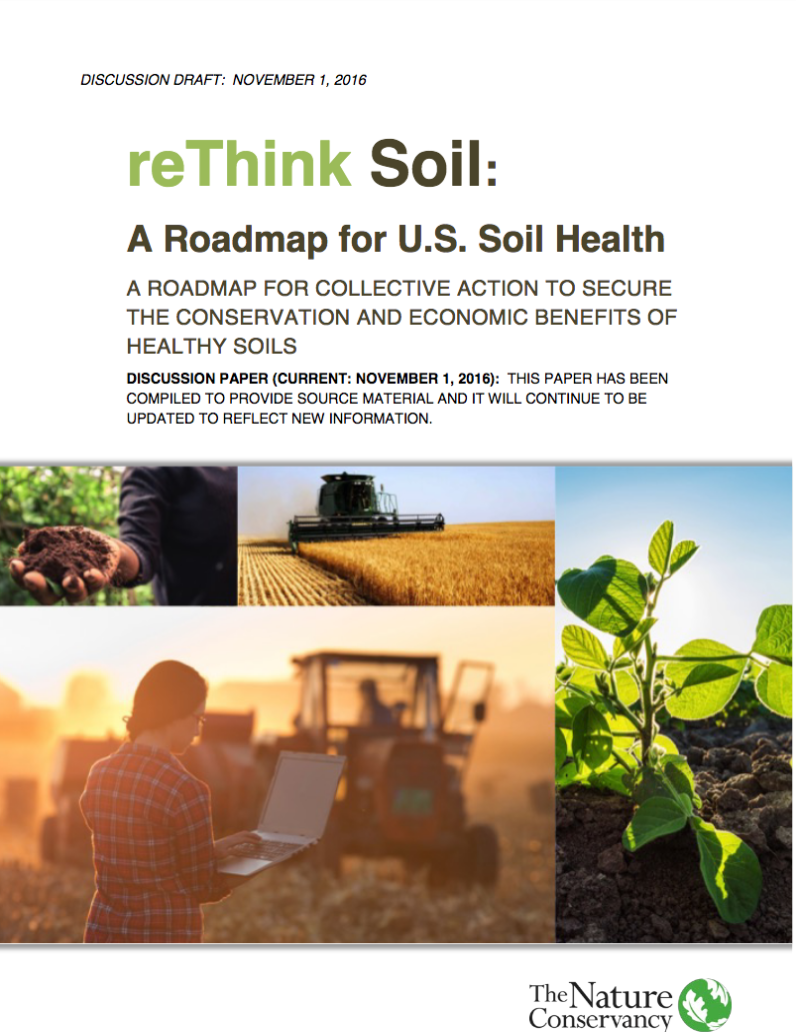Everyone knows we need clean air and water, but we don’t think as much about the soil beneath our feet—and that’s a big mistake. Soil is literally the foundation of all civilizations, of life itself even; we grow 95 percent of the food we eat in the soil. Healthy soils are also crucial for maintaining clean water supplies and mitigating climate change. As Franklin Delano Roosevelt once noted, “The nation that destroys its soil, destroys itself.”
That’s bad news—because our soils are not in great health. The United States is losing 10 billion tons of fertile soil every year, exponentially faster than nature can replenish it. This is particularly alarming when you consider the role U.S. farms play in feeding the world’s growing population. Overall, we’ll need a substantial increase in agriculture production by 2050 if we’re to feed the 10 billion people who will be inhabiting the planet.
Download
Quote
$50billion in social/environmental benefits that soil health could deliver annually.
But soil degradation doesn’t have to be our downfall—in fact, if we take the right steps, soil can be our savior. The recent reThink Soil Health report (and executive summary), developed by an interdisciplinary team of Nature Conservancy scientists, economists and agriculture experts and made possible through support from General Mills, makes the case for investing in sustainable soil health practices that can increase agricultural yields, generate more profit for farmers, and reduce negative environmental impacts. In fact, we estimate that adopting soil health practices on all U.S. corn, soy and wheat croplands could deliver nearly $50 billion in social and environmental impacts annually.* The report was identified by GreenBiz as one of seven reports making a difference in 2016.
Benefits from achieving widespread adoption of soil health practices, as outlined in the Roadmap, include:
- Mitigating 25 million metric tons of greenhouse gas emissions—the equivalent to taking 5 million passenger cars off the road for one year.
- Reducing 344 million pounds of nutrient loss to the environment.
- Eliminating 116 million metric tons of soil erosion.
- Creating 3.6 million acre-feet of available water capacity in cropland soils.
For too long we’ve ignored the crucial resource that lies beneath our feet. It’s time to treat soil like what it is—the foundation of the world.







* To produce these estimates our interdisciplinary team had to make a number of assumptions and choose a single value for costs and benefits that in reality vary considerably across the United States. The team believes that this approach is reasonable for the purpose of coming up with rough estimates of potential impacts and benefits around soil health in the U.S. However, the estimates should not be used at a local or regional scale (e.g. to calculate the aggregate impacts of changes made at the farm scale, or for a farmer to determine what their specific experience will be).
For those interested in more details on the calculations and coefficients used in the paper, you can download the full spreadsheet we used and contact us with questions or feedback at soil@tnc.org.
RESOURCES
-

Infographic: reThink Soil
Working together, committed partners can help ensure a sustainable future for generations to come. Download Infographic




